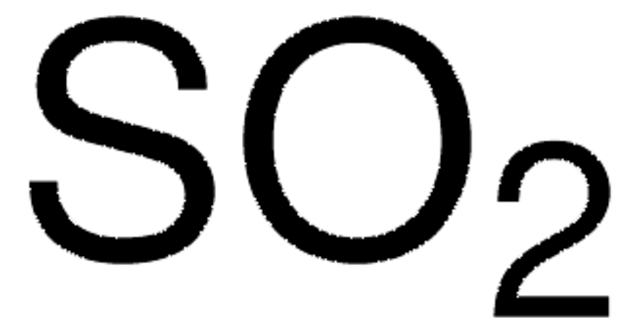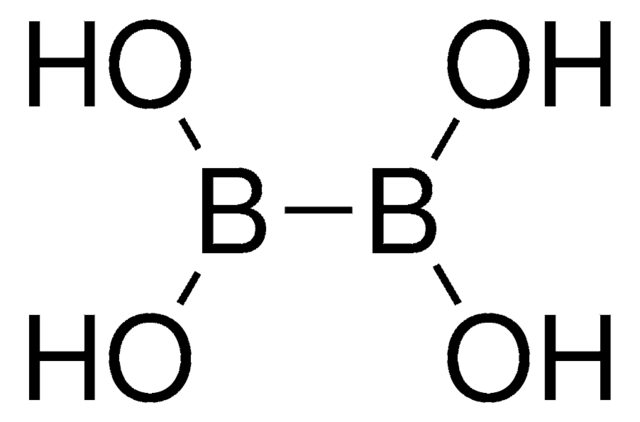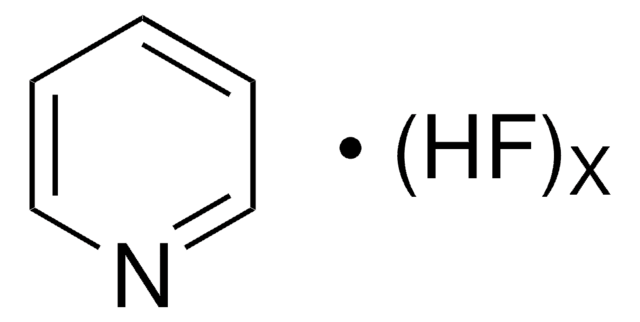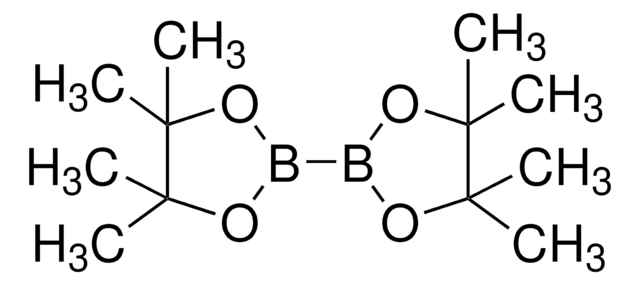239283
Potassium hydrogenfluoride
99%
Synonyme(s) :
Potassium bifluoride, Potassium hydrogen difluoride
About This Item
Produits recommandés
Qualité
for analytical purposes
Essai
99%
Forme
lumps
powder or crystals
Pf
239 °C (lit.)
Densité
2.37 g/mL at 25 °C (lit.)
Chaîne SMILES
[F-].[K+].F[H]
InChI
1S/2FH.K/h2*1H;/q;;+1/p-1
Clé InChI
VBKNTGMWIPUCRF-UHFFFAOYSA-M
Vous recherchez des produits similaires ? Visite Guide de comparaison des produits
Application
- Synthesis of 4′-deoxy-4′-fluorokanamycin A and B: This study discusses the synthetic applications of Potassium hydrogenfluoride in the development of fluorinated antibiotics, highlighting its role in selective fluorination processes (Takahashi Y et al., 1992).
- Reaction of 2-deoxy-6-O-[2,3-dideoxy-4,6-O-isopropylidene-2,3-(N-tosylepimino)-alpha-D-mannopyranosyl]-4,5-O-isopropylidene-1,3-di-N-tosylstreptamine with potassium hydrogenfluoride: This article explores the chemical behavior of Potassium hydrogenfluoride under specific synthetic conditions, providing insights into its role in complex organic transformations (Kobayashi Y et al., 1992).
- A synthetic study of methyl 3-deoxy-3-fluoro-alpha-D-glucopyranosides from methyl 2,3-anhydro-alpha-D-allopyranosides, and synthesis of 3′-deoxy-3′-fluorokanamycin A and 3′-chloro-3′-deoxykanamycin A: This research delves into the synthesis of modified sugars using Potassium hydrogenfluoride, illustrating its utility in the creation of novel glycoside structures, which are important in drug development (Umemura E et al., 1992).
Mention d'avertissement
Danger
Mentions de danger
Classification des risques
Acute Tox. 3 Oral - Eye Dam. 1 - Skin Corr. 1B
Code de la classe de stockage
6.1B - Non-combustible acute toxic Cat. 1 and 2 / very toxic hazardous materials
Classe de danger pour l'eau (WGK)
WGK 1
Point d'éclair (°F)
Not applicable
Point d'éclair (°C)
Not applicable
Faites votre choix parmi les versions les plus récentes :
Déjà en possession de ce produit ?
Retrouvez la documentation relative aux produits que vous avez récemment achetés dans la Bibliothèque de documents.
Les clients ont également consulté
Notre équipe de scientifiques dispose d'une expérience dans tous les secteurs de la recherche, notamment en sciences de la vie, science des matériaux, synthèse chimique, chromatographie, analyse et dans de nombreux autres domaines..
Contacter notre Service technique












![[1,1′-Bis(diphénylphosphino)ferrocène]dichloropalladium(II), complexe avec le dichlorométhane](/deepweb/assets/sigmaaldrich/product/structures/825/986/4317978b-1256-4c82-ab74-6a6a3ef948b1/640/4317978b-1256-4c82-ab74-6a6a3ef948b1.png)
